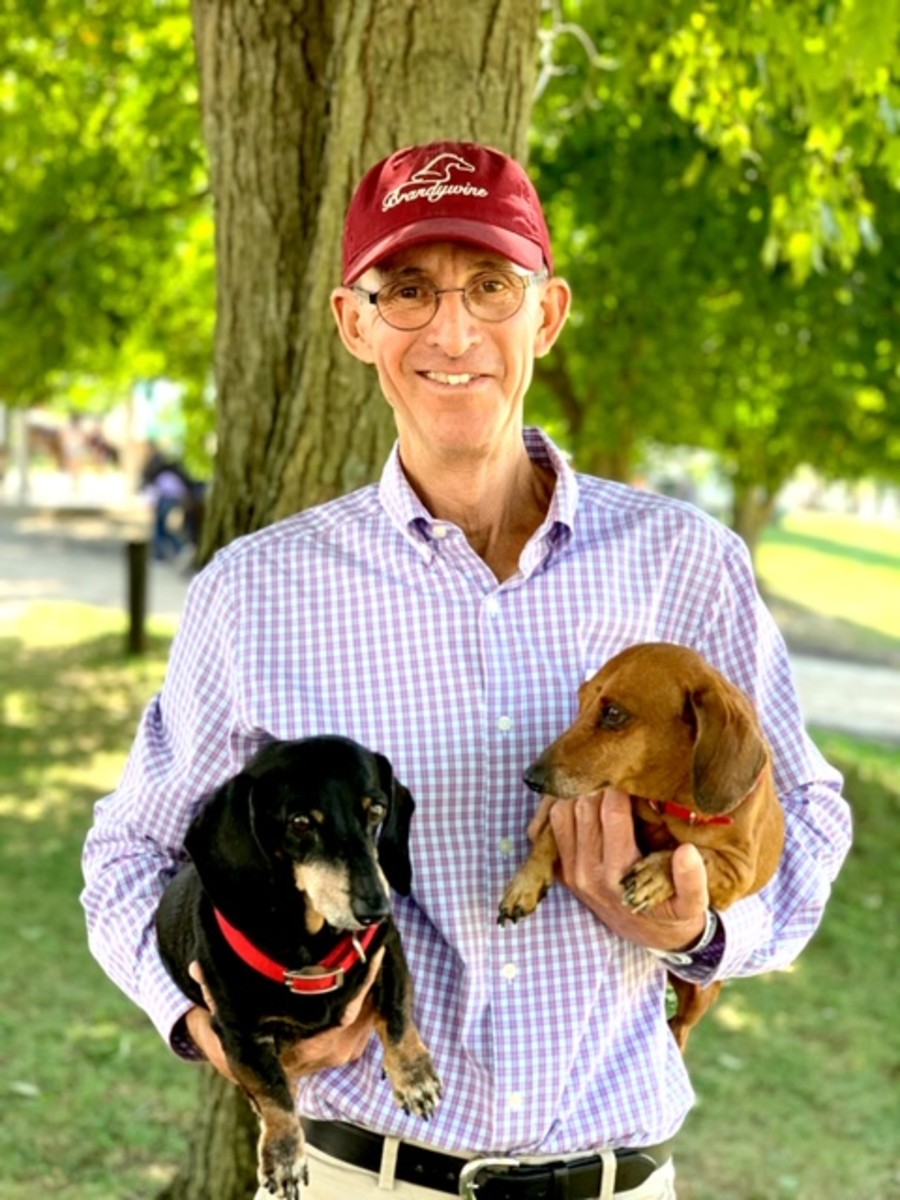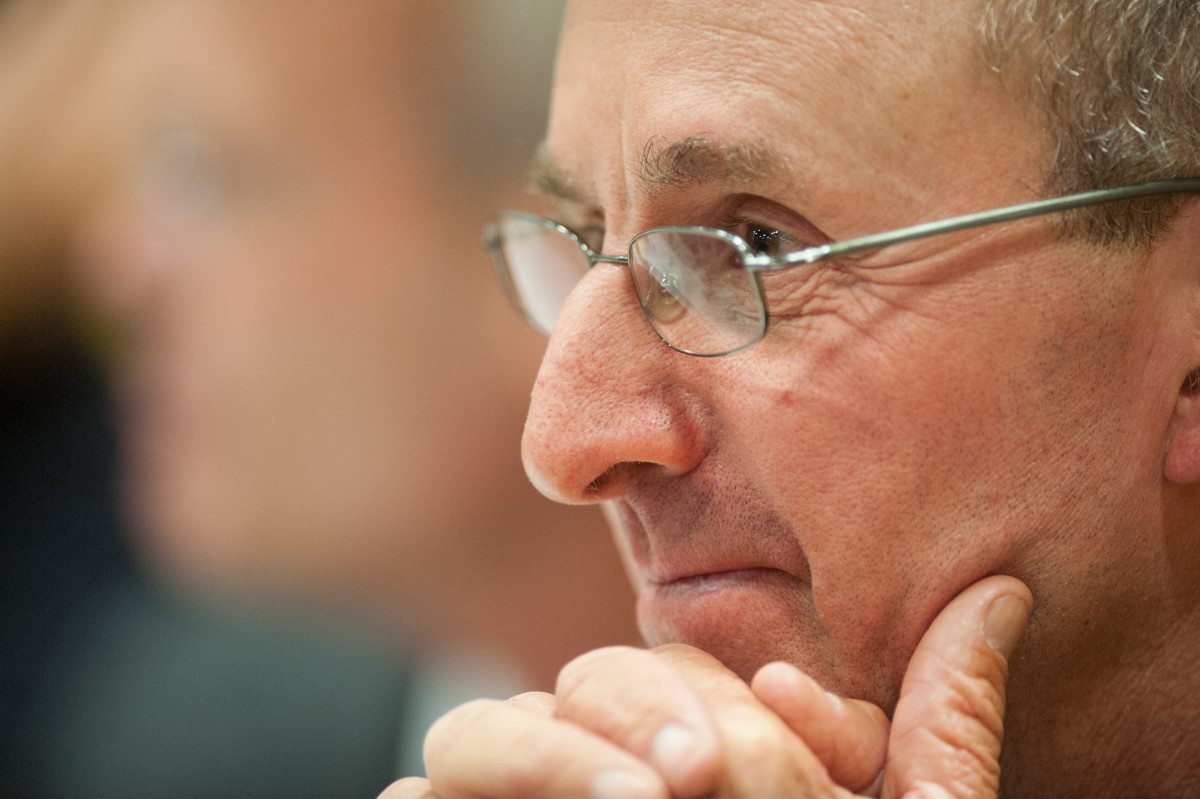Based in Wellington, Florida, Geoff Teall has been involved in the horse industry for more than 40 years. He started out at age 8 foxhunting in upstate New York, learning from Mike Kelly and Gordon Wright. As a young professional, Geoff joined forces with many successful young trainers including Missy Clark and Kip Rosenthal. During this time, his student Laura Bowden won the 1991 AHSA National Hunter Seat Medal Final win. He eventually moved to Wellington, Florida, and continued to run his thriving business, Montoga, Inc., training students to accolades at top shows across the country.

Geoff earned his U.S. Equestrian Federation “R”-rated judging license and has judged prestigious competitions such as the Pessoa/USEF National Hunter Seat Medal Finals and the Washington International Horse Show Equitation Finals to name a few. He has also served as the vice president of the U.S. Hunter Jumper Association, the president of the American Hunter Jumper Foundation and on the board of directors for those two organizations and the USHJA Foundation and the USEF.
In this episode, Geoff talks about how he pushed himself and was encouraged by others to try a variety of jobs in the horse industry and his training philosophy of “simplicity, basics, discipline and habit.” He also shares his system for teaching his students how to “see a distance” and his thoughts on SafeSport.
You can listen to the full interview wherever you listen to podcasts, but in the meantime, here is a snippet of the conversation.
There are people who like to stay in their comfort zone. What is about you that has always pushed you to try something new?
It’s interesting because in the beginning it was people who pushed me and then over time I learned to push myself. Horse show management is a great example. I would never have even thought of doing that. My friend Louise Serio called up one day out of the blue and said, “Would you run my horse shows for me?” And I said, “Well I guess we’ve been friends long enough. Yeah, I’ll try that.”

I’m actually a very timid, fearful person and I have a severe lack of confidence which anybody who really knows me would believe me—but that’s about three or four people. Most people think of me as being very strong and very confident and very sure and I’m not at all. I really believe that anything that you are afraid of or gives you anxiety, you have a choice. You can either run away from it or toward it. So many times I have made the choice to run toward it as opposed to away from it because I think once you turn around and start to run away there’s no stopping. I should also say that I had amazing parents who were very fair but very strong and they had a lot of confidence in me—I have a brother and sister as well—and always pushed us to do the best that we could. I think good parenting is crucial to all of this.
How do you get past the fear of failure?
It always comes down to one or two things that stick in your brain that make you go either this direction or that direction. I remember one time very early on Conrad Homfeld saying to me, “All you have to do is stay on the list.” I don’t know what he meant but what I took that to mean was, each day get up and go to work, do the best that you can and as long as you have done the best that you can, that’s as much as you can do and there’s sometimes where you just have to say, “Alright that wasn’t particularly good but that’s the best that I could do and I will figure out a way to correct it and make it better and go back out and do it.” That’s just strength and resolve and discipline more than anything else. You can’t spoil yourself and you can’t placate. You have to just get up in the morning, go to work and do the best that you can. As long as you do that every day, you’re doing great.
How would you describe your teaching or training philosophy?
Over the years, it has become so clear to me. My whole approach is very simple, very basic and build the very best habits that you can. Whether you’re talking about your position as rider or how to train a horse or how to prepare for this big event or that big event, it all boils down to simplicity and basics and discipline and making the simplest things such habit that you can’t not do them.

I’ve been so lucky, I get to teach a lot of clinics around the country and because of that, when I have a 2-day or 3-day clinic ahead of me after having done probably 8 or ten million of them, I’m very confident that as long as I work on just the very simplest things and I start at the beginning and go very slowly and very methodically and very thoughtfully that I will get to the finish that I want to get to. Because I’ve had a chance to do that in so many different situations, it’s very easy for me at this point in my career to never vary from it. So that’s a long way of saying, basics, simplicity, good habits. I like to say at clinics that the best rider is the rider who does the simplest things the best. It’s not the rider who does this fancy schmancy thing or that fancy schmancy thing the best. It’s the rider who does the simplest things the best and that’s what we all have to keep track of.
Over the years, you’ve written a lot of articles for Practical Horseman. The most recent one is about your program for helping your students “see a distance.” It seems as if there are a lot of amateur riders who beat themselves up if they don’t see the ideal take-off spot to a fence. Why is that such a prevalent feeling among riders?
Seeing a distance, unless you can keep it at bay, will become the most important thing in the world and that’s it’s biggest danger. Everybody worries themselves to death about it, talks about it, dreams about it and so it becomes larger than life. And the reality to me is that each person really has the same ability to see a distance … If you can discipline yourself to ride forward and straight and in an even pace and maintain that going to that jump, your eye coupled with the help of a horse, you will react to what’s happening subconsciously or automatically. The trick is to understand the pieces that you can control and must control and then they will take care of those things that you cannot control. So the opposite is if you go to the jump and you are actively looking for a distance, then unknowingly, more than likely you’re either slowing down, speeding up, going left or going right and therefore, the distance will elude you. So the very thing you are looking for, you’re creating an environment where it won’t happen. Instead you have to manage that and control that situation and control what you can control, which is pace and line and as a result you will see or react or feel the distance.
See also: “See Your Distance”
Could you share your thoughts on SafeSport?
First, we have to create a safe environment for our children and our sport. There’s obviously no question about that and I don’t think anybody could argue with that and it’s not limited to children. We need to be constantly creating the safest and best environment that we can for our participants. Having said that, the only way that I can personally get through this stuff is to really look down the line and so for me, what’s the most important part about all this is that we find these people that have problems or that are a danger or that have issues. We find them as early as we can before they become the icons of our sport and get them out of our sport. So we need to really focus on everything from this point on, looking forward, so that 10 years from now and 15 years from now, 20 years from now, we will be selecting the next group of icons from a group of people who have already passed the test and are safe, upstanding reliable people so that we don’t have the issues in the future that we’re having now. This is a very difficult time. And I struggle with it in a lot of different ways. But again, when I get struggling for me what’s important, just like riding, is to look forward and say, “This is an issue, this is a problem, we can’t have this problem. We need to get to these people as early and as efficiently and as completely as we possibly can so that we can have a clean sport to work from.”
About the Practical Horseman Podcast
The Practical Horseman podcast features conversations with respected riders, industry leaders and horse-care experts to inform, educate and inspire. It is co-hosted by Practical Horseman editors. Find the podcast at iTunes, Stitcher and Soundcloud or wherever you get your podcasts.







